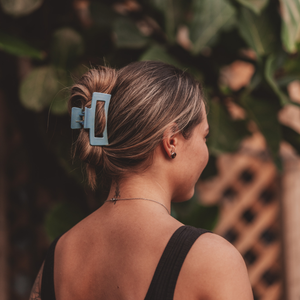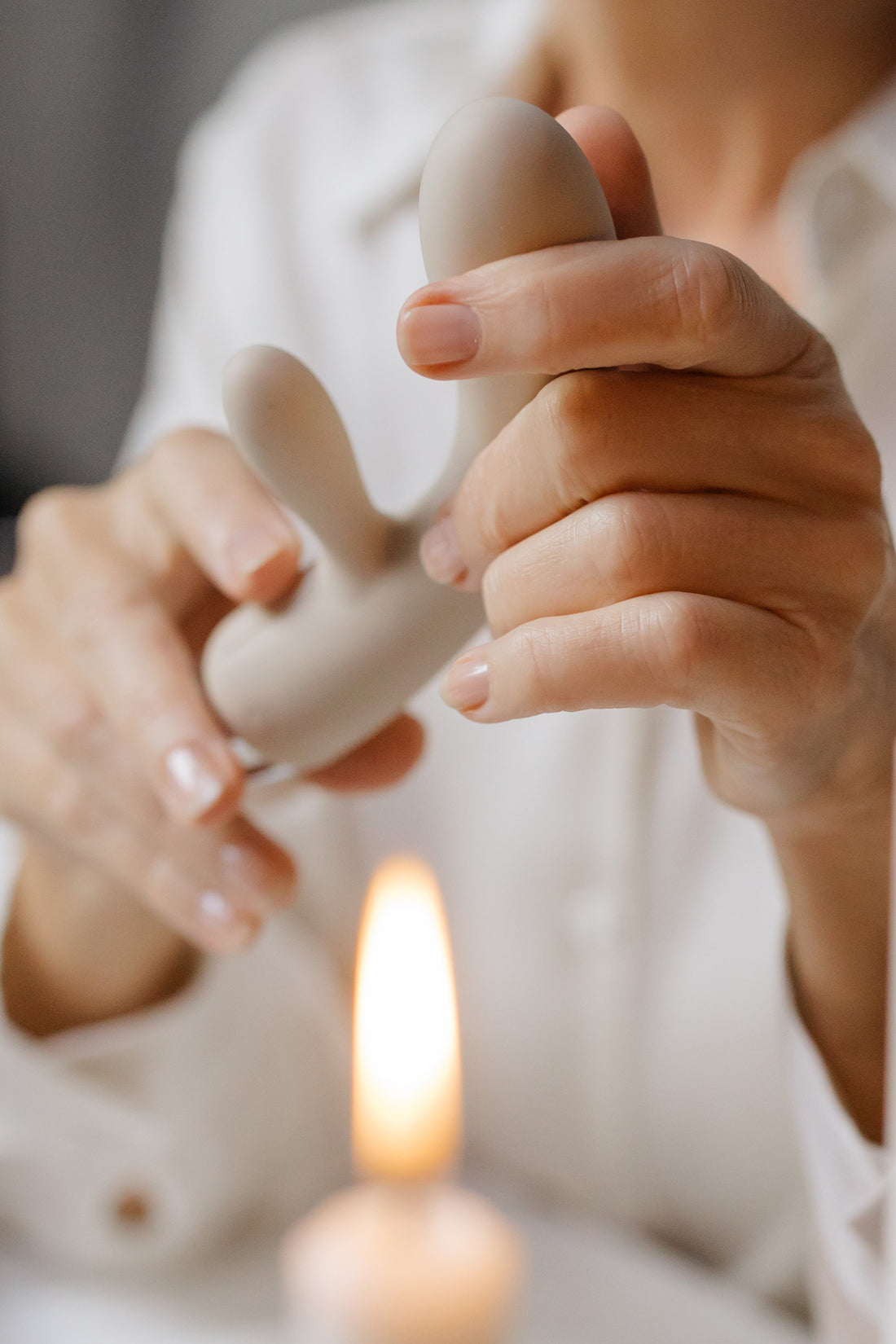Discovering female pleasure: everything you need to know about masturbation
By: Loryanne-Héllene Gauvin, sexologist and co-founder of the Matrescence Clinic
Masturbation itself is a practice that has long been considered an immoral taboo. Male masturbation, in particular, has already been considered a dangerous practice which causes diseases #onanism #thanksTissot. Now, we know that masturbation is a completely natural practice and beneficial for sexual and emotional health. However, female masturbation remains (even if it is getting better and better) a taboo subject.
The clit-what?
Masturbation, regardless of gender, is a universal human experience. It is a practice that allows self-knowledge regarding one's own body, one's sensations and one's sexual preferences. Yet female masturbation has often been surrounded by negative stereotypes and misinformation. First, it is important to mention that women's sexuality has long been developed around procreation and penetrative pleasure, particularly under the reign of religion. It is possible to think of the chastity belt in the Middle Ages, or of marital duty. Also, there is Freud who developed the term “libido”. For him, a woman's sexuality migrated from the clitoris to the vagina. However, it has been shown that the primary stimulation in sexual intercourse in women is the clitoris, both externally and internally. Furthermore, we can thank the radical feminist Anna Coedt with her article in 1970 "The myth of the vaginal orgasm", and Helena O'Connell in 1998 who addressed the complexity of the clitoris, then finally to Fauldier and Buisson, in 2009, who published the first 3D ultrasound image of the stimulated clitoris. Well, what we must understand from these references is that it took a long way before we validated that the woman's sexual pleasure distanced itself from that of the man. Fortunately, there are positive changes happening with regard to female sexuality, but the fact remains that we still have a lot to deconstruct and learn!
The myth of the G-spot
In addition to the benefits of female masturbation, it is essential to discuss the famous "G-spot", a subject that has generated many discussions, questions and misunderstandings over the years. The “G-spot” is a specific area inside the vagina, located on the anterior wall (towards the navel) approximately 2 to 5 cm from the entrance to the vagina. It was named after the German gynecologist Ernest Grägenberg, who first described it in the 1950s. The G-spot has long been believed to be the key to intense vaginal orgasm and should be stimulated to achieve this goal (#notalways).
Many studies have failed to provide solid evidence for its existence or precise location. The reality is that all women are different, and what works for one may not work for another. Furthermore, when we talk about female ejaculation, we are talking about the stimulation of the para and periurethral glands which line the urethra. However, not all women will produce it and each will have a different amount (because each person is unique, so is each body). Of course, G-spot stimulation can cause strong arousal and intense orgasms for some women, while for others they may not feel much. It is therefore essential to understand that sexuality is complex, and we all have our own sexual preferences and erogenous zones. Above all, you should not put pressure on yourself to find the G spot.
The benefits of female masturbation
- Pleasure and relaxation : Masturbation is a great way to relax and feel pleasure. The resulting orgasm helps release endorphins and oxytocin (happy hormones), which can help reduce stress, anxiety, improve sleep quality and even reduce menstrual pain.
- Better knowledge of their body : It allows women to better understand their anatomy and what gives them bodily pleasure. This can especially be helpful in improving their sex life and effectively communicating their needs to a partner. So, yes, even if you are in a relationship, it is pure empowerment to know your body and be able to guide others.
- Strengthening the immune system : Studies have shown that regular masturbation can strengthen the immune system by increasing the production of antibodies and reducing the risk of certain infections.
Female masturbation: some advice
If you're considering exploring female masturbation or looking to improve it, here are some helpful tips:
- Create a comfortable environment : choose a place where you feel comfortable and safe, with complete privacy. You can also stimulate your senses with smells, candles, images, relaxing music... In short, what is consistent with your
- Explore your body : take the time to discover your own anatomy. Use your hands to explore different areas of your body (not just the genitals!) and discover what gives you pleasure.
- Use “Tools” : There is now an opportunity to get sex toys that can add a new dimension to masturbation. Make sure you choose a toy that matches your preferences and comfort. The goal is to feel comfortable, not intimidated.
- Relax and breathe : Deep breathing can help relax you and intensify sensations. Do not hesitate to practice meditation or breathing exercises to connect with your body. And this, outside of the masturbatory routine.
- Have good hygiene in your routine : Wash your hands before, pee after masturbation and clean your toys (if used): This will help you prevent vaginal and urinary infections.
- Respect yourself! : Sexuality should never be burdensome or forced. If you're not interested in masturbation, that's VERY OKAY. It's not obligatory, and there are plenty of ways to explore your sexuality. Furthermore, if you feel uncomfortable about sexuality, it is important to consult a professional to address it.
In conclusion, female masturbation is a normal and healthy practice that should be free of any stigma. It is a powerful way to discover your own body, relax, reduce stress and build self-confidence. The more we normalize this conversation, the more we contribute to sexual agency and autonomy, therefore to the fulfillment of women in their sexuality. This is a perfect opportunity to discover what excites you the most. There are no hard and fast rules or “magic point” that guarantees orgasm. The most important thing is to feel comfortable with your own body, communicate what you like (or don't like) and enjoy exploring without pressure or unrealistic expectations. It is an individual journey that allows you to have a better understanding of your sexual desires. Have fun!
References
- Basson, R., Brotto, LA, Laan, E., Redmond, G., & Utian, WH (2010). Assessment and management of women's sexual dysfunctions: problematic desire and arousal. Journal of Sexual Medicine, 7(1pt2), 586-614.
- Brotto, L.A., Basson, R., & Luria, M. (2008). A mindfulness-based group psychoeducational intervention targeting sexual arousal disorder in women. Journal of Sexual Medicine, 5(7), 1646-1659.
- Carvalheira, A., Santana, R., & Pereira, N.M. (2014). Why do women refrain from sexual activity? Results from a Portuguese representative sample. Journal of Sex & Marital Therapy, 40(5), 349-367.
- Exton, M.S., Bindert, A., Krüger, T., Scheller, F., Hartmann, U., & Schedlowski, M. (2001). Cardiovascular and endocrine alterations after masturbation-induced orgasm in women. Psychosomatic Medicine, 63(5), 833-838.
- Herbenick, D., Reece, M., Sanders, SA, Dodge, B., & Fortenberry, J.D. (2011). Women's vibrator use in sexual partnerships: Results from a nationally representative survey in the United States. The Journal of Sexual Medicine, 8(10), 280
- Jannini, EA, Buisson, O., Rubio-Casillas, A., & Whipple, B. (2014). Beyond the G-spot: clitourethrovaginal complex anatomy in female orgasm. Nature Reviews Urology, 11(9), 531-538.



